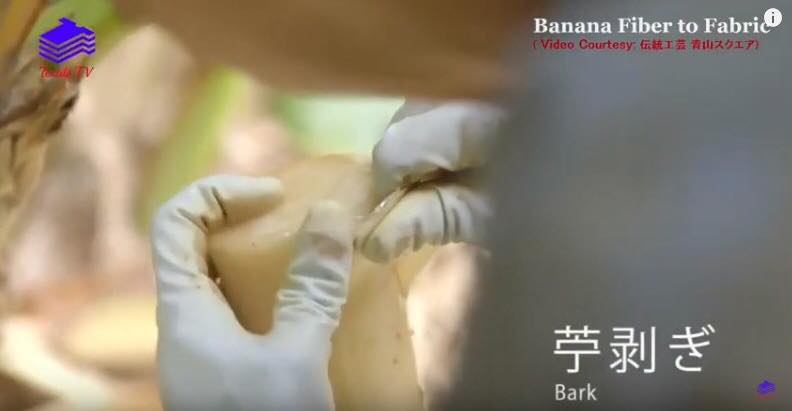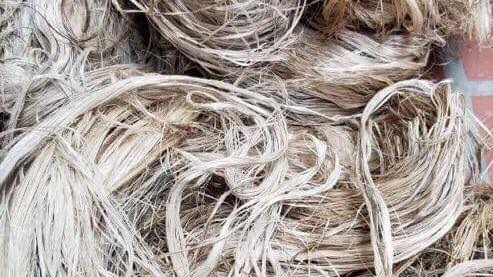Banana is cultivated in over 120 countries throughout the tropical and subtropical regions of the world. The ten largest banana-producing countries are India, Uganda, Ecuador, Brazil, Colombia, Philippines, China, Indonesia, Democratic Republic of Congo, and Costa Rica. About 17% of the world‘s bananas are produced in India. India is the largest producer of Bananas in the world with an estimated annual output of 13.5 million tons. It is cultivated in the tropics; in about 1, 86,000 hectares of land and the fiber yield is around 7.5 lakh tones per annum. In India, banana is cultivated on 5.65 lakh ha area and the leading major banana growing states are Maharashtra (0.54 lakh ha), Gujarat (0.49 lakh ha), Tamil Nadu (0.82 lakh ha), Andhra Pradesh (0.56 lakh ha), Karnataka (0.42 lakh ha) and Kerala (0.59 lakh ha After the fruit production, the trunk of the banana plant i.e.: the pseudostem is thrown as agricultural waste to a great extent .These pseudostems can be effectively utilized in the production of the banana fibres as, annually, about 1.5 million tons of dry banana fibres can be produced from the outer sheath of pseudostem. With the increasing demand for Banana in both the Indian and International markets, the acreage and production are expected to increase in the coming years, thus generating more of the pseudostem biomass waste. ). Banana fibre is natural fibre. Stiffness and mechanical properties and high disposability and renewability. Moreover, they are recyclable and biodegradable.Being a rich source of natural fibres, the pseudostem can be profitably utilized for numerous applications and preparation of various products.
![]()
References of the history reveal that the banana fibre cloth was made around 13th century in japan. The Japanese word bashôfu literally means ‘banana-fibre cloth’. Both the cloth and the clothing made from it are now considered important constituents of Okinawan identity. This special trait of Okinawan material culture was brought to attention by the Japanese Folk Craft Movement in the 1930s.
After years of decline following World War II, the weaving and use of bashôfu saw a revival that accelerated after the return of Okinawa to Japan in 1972 and still continues. Although its origins and history had remained hidden
Banana fibre is obtained from the pseudostem of the banana plant by decortication i.e. stem is generally scrapped with the help of a blunt knife. Banana plant cannot be grown except under tropical conditions, as it bears numerous leaves and only very short roots, it requires humidity both in the atmosphere and in the soil, and is only able to thrive in areas which have rainfall more or less evenly distributed throughout the year. It is essential that the rainfall should be evenly distributed throughout the year as a rainless period of as long as 6 weeks may harm the plant. While a prolonged draught is usually fatal, banana will not withstand flooding. So a warm humid climate is essential. The soil should be loose, rich in humus, and properly drained. A moderate amount of minerals in soil is stated to be necessary.


All varieties of banana trees abound in fibres. In fact almost each and every part of the banana plant gives fibres of various strength, colour and beauty and staple length which can be used for various purposes.
Out of the 14-18 sheaths available in a stem, the outermost 4-6 sheaths yield course fibre, the outer 6-8 sheath soft lustrous fibre and the rest middle sheath excluding the innermost 4-6 sheaths yield very soft fibers. In each sheath, there are 3 distinct layers, the outer layer including the epidermis, contain the bundles of fibres dispersed in a soft tissue matrix. The middle layer consists of water transporting fibre vascular tissue. And the inner layer consists of soft, cellular tissue. The quantity of fibre in each sheath depends upon its width and its location in the stem, as does its quality. In addition to fruit production, a huge quantity of biomass (pseudostem, leaves, suckers etc.) is generated. Presently, this biomass is discarded as waste. In past, some researchers have successfully demonstrated the use of banana pseudostem and leaves for extraction of fibres on a small scale. In India, the fibres are being used for preparing handicrafts, ropes etc., which otherwise can be used for making fabrics, home furnishings and good quality papers.
Source: NATIONAL INSTITUTE OF FASHION TECHNOLOGY
MUMBAI 2017 MANOGNA AVUNOORI shodhganga.inflibnet

You may also be interested in
Musa Pacta participates in launching project VIE/039 in Thua Thien – Hue with a budget of 2 million Euros funded by the Government of Luxembourg and the Government of Vietnam
The People’s Committee of Thua Thien – Hue province and the Luxembourg Development Cooperation Agency...
Dec
VIETNAM BANANA FIBER CRAFTS – MUSA PACTA
Banana fiber is a unique natural handmade material, made from the inner fiber of the...
Apr
PLAN TO GROW MUSHROOMS ON FRESH BANANA GROUNDS
PREPARING MUSHROOM GROWING SUPPLIES 1.Prepare the mushroom growing house Area: about 100m2, corrugated iron roof,...
Jul
Big dreams for the banana industry
Though prices fluctuate all the time, in general they are on the rise, from $300...
Jul
Banana fiber: a green industry that is saving the environment
A fabric made out from banana fiber could well be next green apparel of the...
Jul
Banana fiber: a revolution in textile
Banana plant (scientific name: Musa acuminate) not only gives delicious fruits but also provides textile fiber,...
Jul
Banana fiber applications
The stem of the banana plant is usually thrown away once the plantain is harvested....
Jul
BANANA FIBER BLENDED WITH COTTON
A New Natural Fiber that offers an alternative to Linen Cotton, Linen & Silk are...
Jul